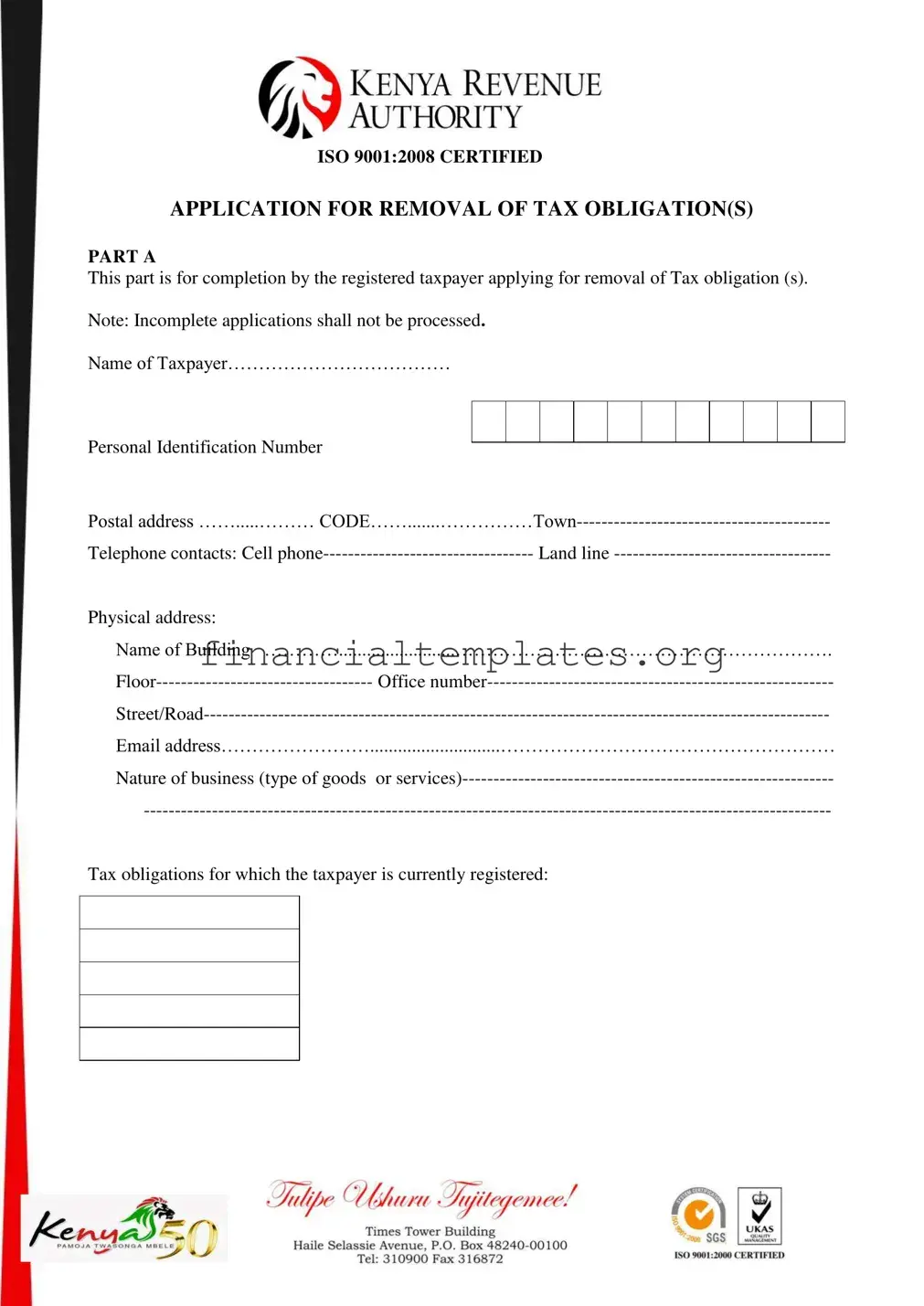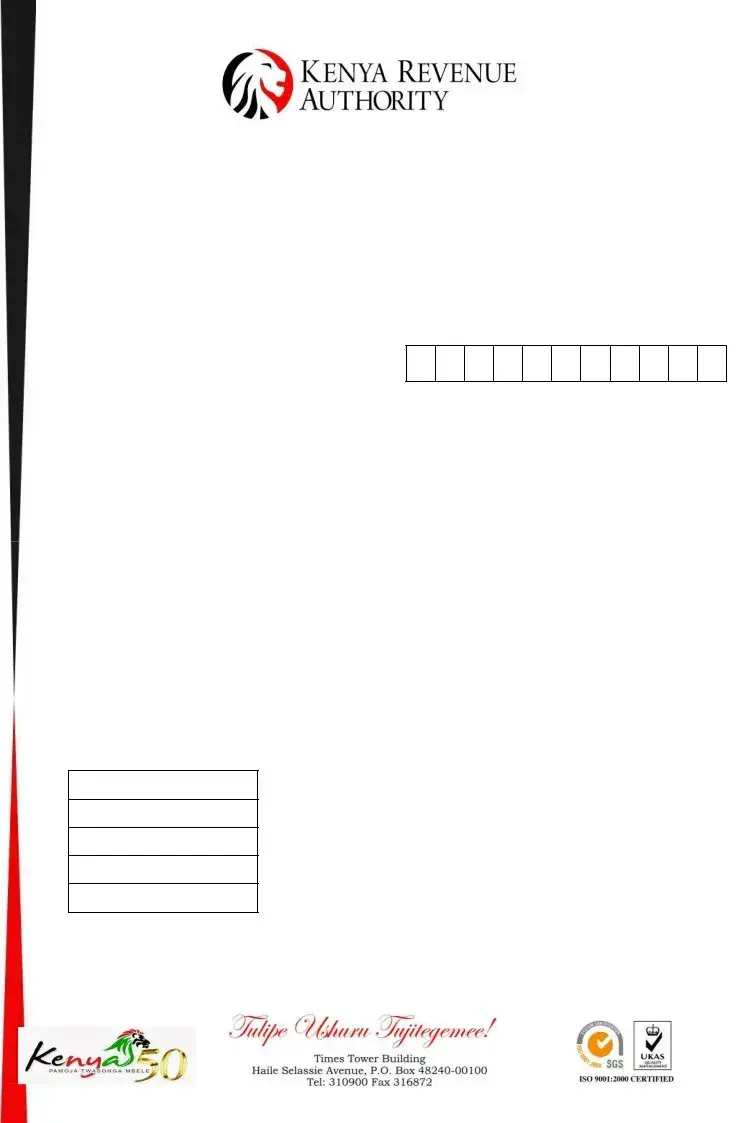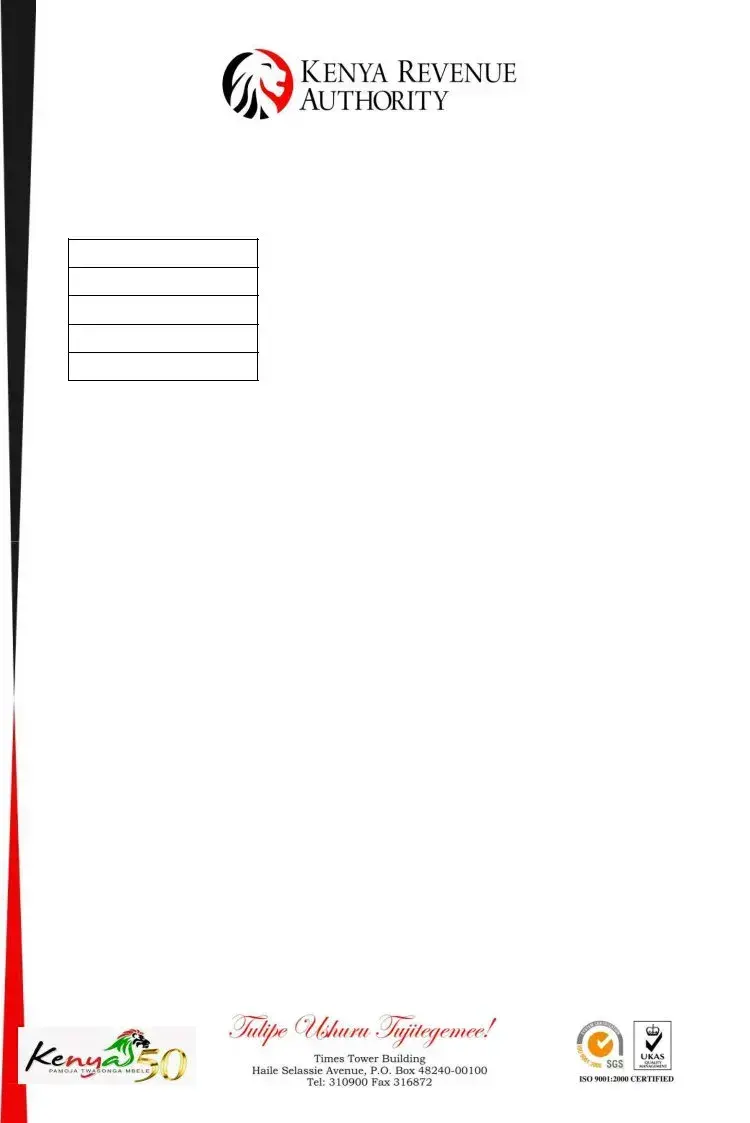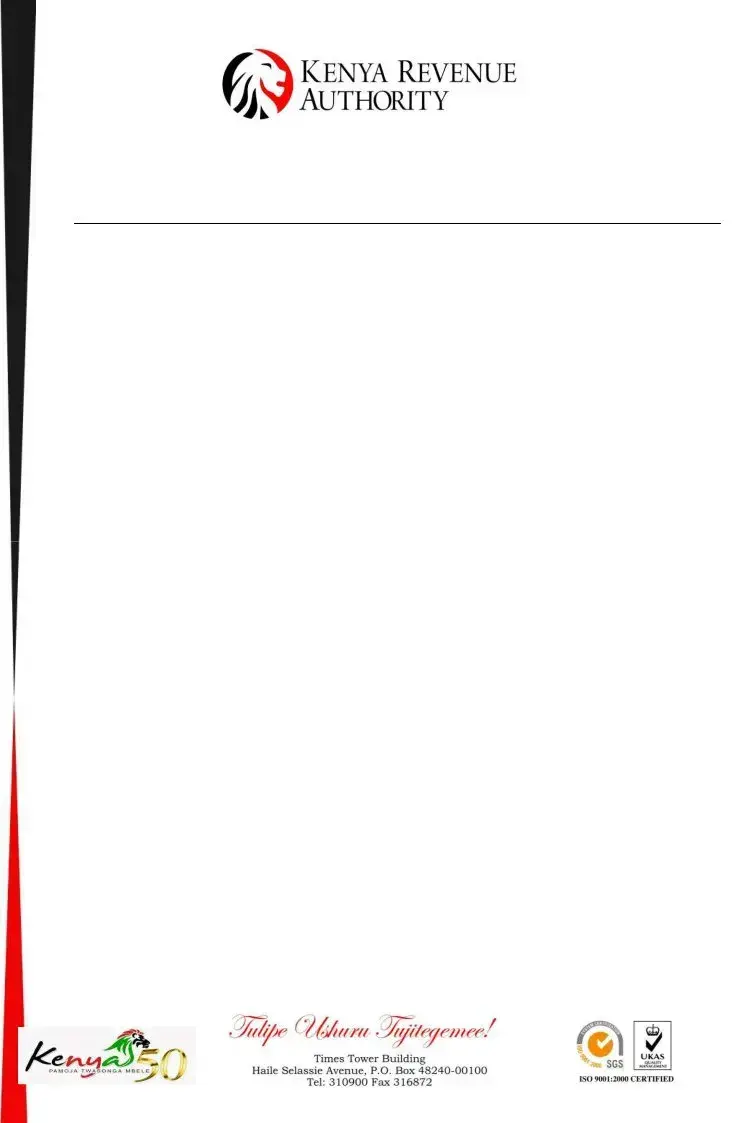ISO 9001:2008 CERTIFIED
APPLICATION FOR REMOVAL OF TAX OBLIGATION(S)
PART A
This part is for completion by the registered taxpayer applying for removal of Tax obligation (s).
Note: Incomplete applications shall not be processed.
Name of Taxpayer………………………………
Personal Identification Number
Postal address …….....……… CODE…….......……………Town-----------------------------------------
Telephone contacts: Cell phone---------------------------------- Land line -----------------------------------
Physical address: |
|
Name of Building |
………….........................……………………………………………………. |
Floor----------------------------------- |
Office number-------------------------------------------------------- |
Street/Road-----------------------------------------------------------------------------------------------------
Email address……………………............................………………………………………………
Nature of business (type of goods or services)------------------------------------------------------------
---------------------------------------------------------------------------------------------------------------
Tax obligations for which the taxpayer is currently registered:
ISO 9001:2008 CERTIFIED
Tax obligation(s) to be removed
Reasons for request for removal of Tax obligation(s)
------------------------------------------------------------------------------------------------------------------------
------------------------------------------------------------------------------------------------------------------------
------------------------------------------------------------------------------------------------------------------------
Documentary evidence attached in support of the reasons above (where applicable)--------------------
-----------------------------------------------------------------------------------------------------------------
------------------------------------------------------------------------------------------------------------------------
Attach copies of PIN, Certificate of Incorporation, Business Registration and the documentary evidence where applicable.
Name of Applicant ------------------------------------------------------------------------------------------------
Position/Designation-----------------------------------------------------------------------------------------------
Signature-------------------------------------------------------------------------------------------------------------
Date------------------------------------------------------------------------------------------------------------------
ISO 9001:2008 CERTIFIED
PART B (FOR OFFICIAL USE ONLY)
Observations by TRR Officer
Recommendations:
------------------------------------------------------------------------------------------------------------------------
------------------------------------------------------------------------------------------------------------------------
------------------------------------------------------------------------------------------------------------------------
Obligation(s) to be added-----------------------------------------------------------------------------------------
------------------------------------------------------------------------------------------------------------------------
Obligation(s) to be removed--------------------------------------------------------------------------------------
------------------------------------------------------------------------------------------------------------------------
System TRE update reference Number -------------------------------------------------------------------------
Name of TRR Officer----------------------------------------------------------------------------------------------
Signature --------------------------------------------------------------------------------------------------------
Date ---------------------------------------------------------------------------------------------------------------
Comments by TRR manager
------------------------------------------------------------------------------------------------------------------------
------------------------------------------------------------------------------------------------------------------------
------------------------------------------------------------------------------------------------------------------------
Obligation(s) removed---------------------------------------------------------------------------------------------
-----------------------------------------------------------------------------------------------------------------------
Date obligation(s) removed--------------------------------------------------------------------------------------
Name of TRR manager--------------------------------------------------------------------------------------------
Signature-------------------------------------------------------------------------------------------------------------



